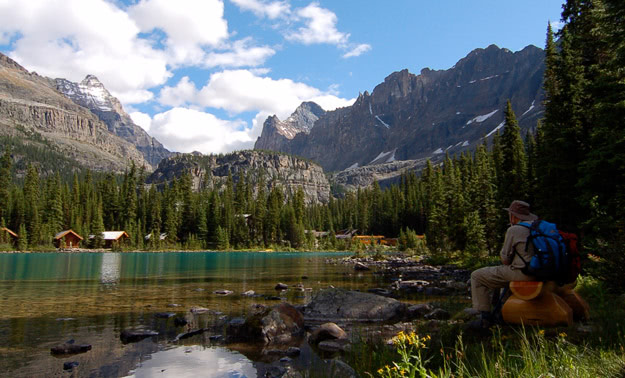
Yoho National Park, established in 1885 as Canada's 2nd protected area, sits on the western side of the Continental Divide, bordering Banff National Park. The name Yoho, a Cree expression of awe and wonder, succinctly captures the landscape's essence. Shaped by the forces of plate tectonics and erosion and sculpted by glaciers from the ice age, Yoho's steep slopes, flat valleys, and alpine peaks comprise a variety of unique habitats that are home to an incredibly diverse mix of plants and animals.
The Park is host to many of Canada's most scenic locations such as Emerald Lake, Lake O'Hara, Takakkaw Falls, Natural Bridge, and Yoho Valley, which offer ample camping and hiking opportunities.
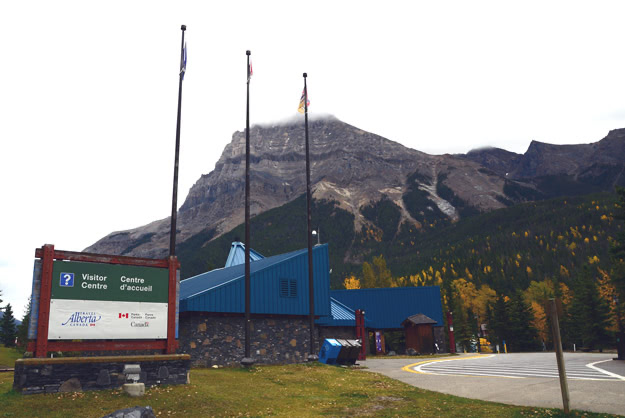
The Parks Canada Visitor Centre at the entrance to the Field townsite is the best place for up-to-the-minute advice for Yoho visitors. Trail closures, weather updates, avalanche info, hiking advice and more can help make your Park experience safe and memorable. Revenues from Yoho National Park Visitor Entry and Service Fees help maintain national park facilities and services, ensuring that Yoho will remain pristine for future generations.
Yoho's Waterfalls
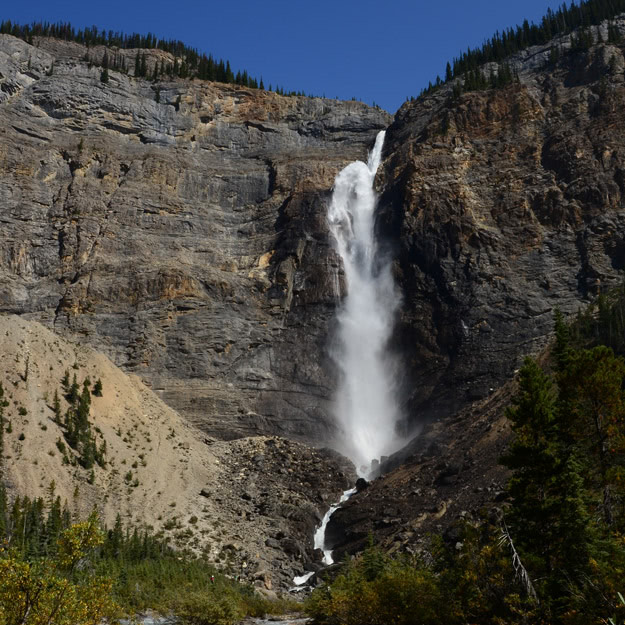
The park is perhaps most famous for its plethora of waterfalls, including one of the highest in North America.
Burgess Shale
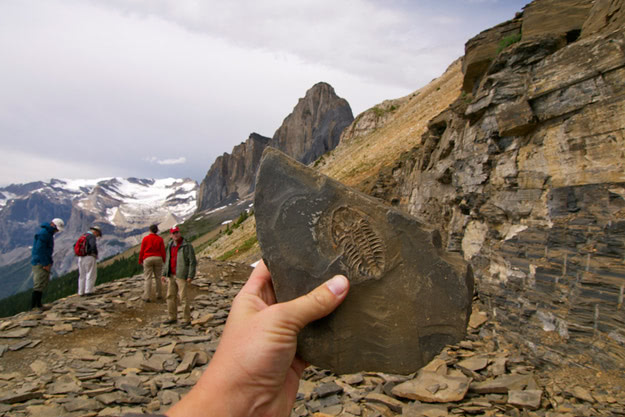
Fossil buffs will want to take a trip 500 million years back in time to the middle Cambrian period by scheduling a visit to one of Yoho's ancient fossil beds.
Natural Bridge
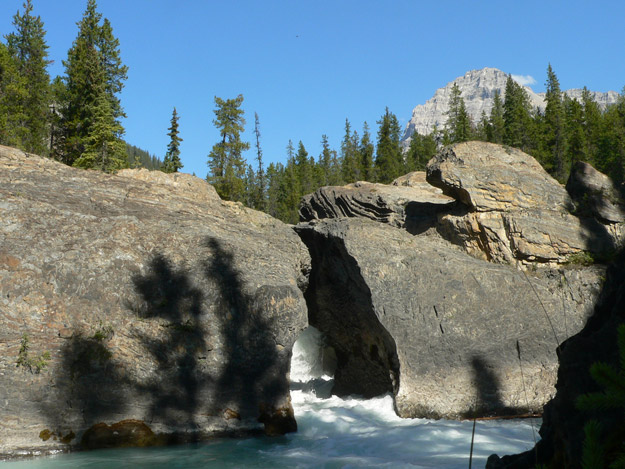
Yoho's natural wonders aren't limited to waterfalls. This ancient rock formation spans the rushing waters of the Kicking Horse River.
Emerald Lake
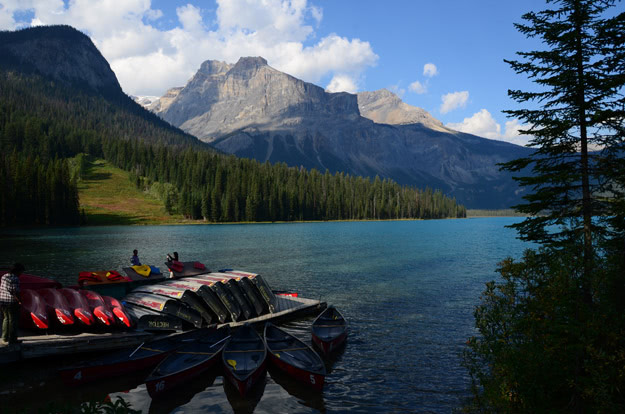
This picturesque lake is a key focal point for visitors, with a partially wheelchair-accessible 5.2km hiking circuit, canoe rentals, a high-end lodge with multiple restaurants, and cross-country skiing in winter.
Lake O'Hara
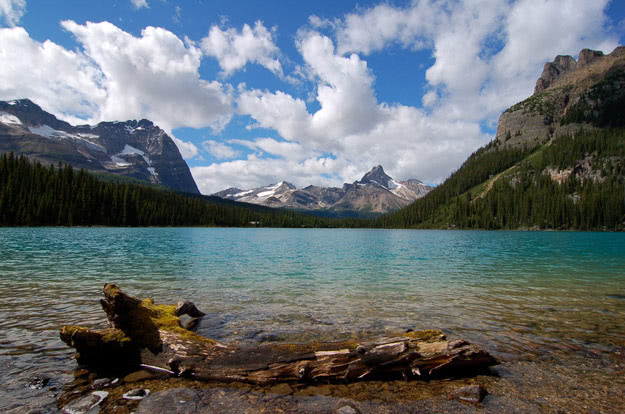
Not to be outdone, Lake O'Hara is a stunning alpine lake which has limited access due to its delicate ecosystem. It's home to a popular campground, a high-end lodge, and is a popular starting point for some of Yoho's most famous hikes and alpine routes.
Yoho Valley
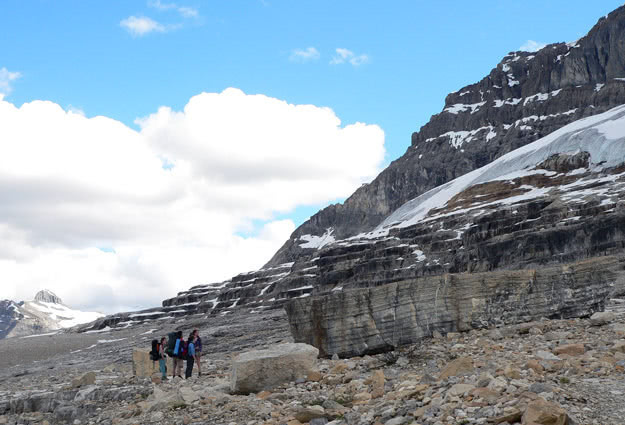
Yoho's Wildlife
The wildlife that lives in Yoho National Park is an enduring national treasure that can give us a glimpse into what North America looked like hundreds of years ago. While you walk in this great landscape you are visiting the home of the Moose, Grizzly Bear, Elk, and Cougar, to name a few. These animals live free from the threat of hunting and human development. This is why wonderful animal spotting opportunities are available in the Canadian Rockies Park system.
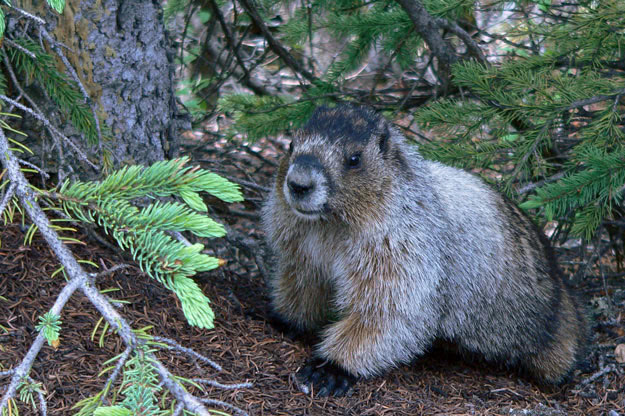
Visit the Wildlife Page to learn more about the wildlife that you may see while visiting the village of Field and Yoho National Park.
Yoho's Unique Flora
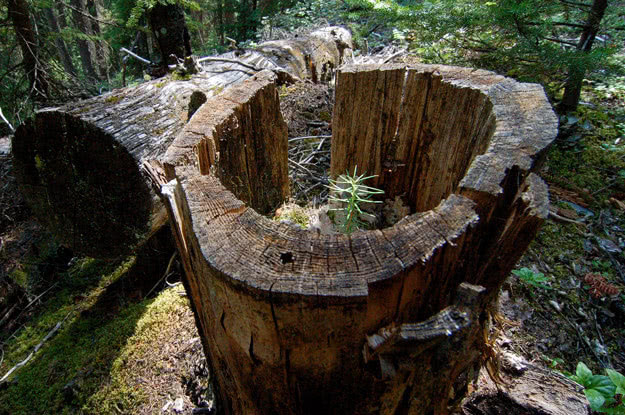
The barren mountain tops and cold glaciers of Yoho impart one with the notion of desolation, yet when the long winter is over, the plants here explode with an intense vibrancy.
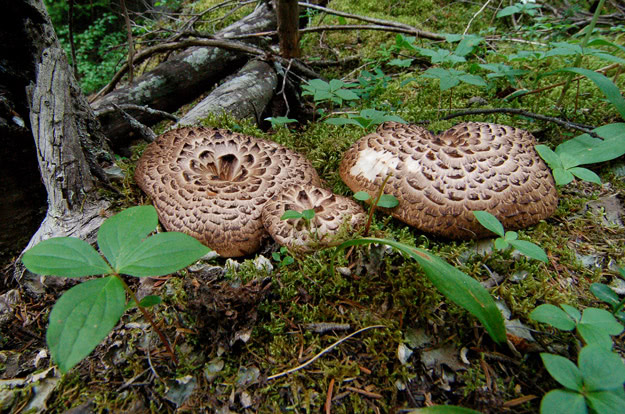
In the spring you will find countless mushroom species on the moist forest floor far below moss covered treetops. The midsummer sun warms the exposed mountain slopes at higher elevations, triggering the emergence of a sea of wildflowers. Yoho National Park is indeed a land of intense contrasts.
Yoho's Rugged Landscape

The most resilient of Yoho's inhabitants make their home above the treeline, where thin air, strong winds, cold temperatures, intense UV radiation contribute to a short growing season that stunts the growth of plants and provides little shelter for animals. Plants have adapted to the stark conditions, growing low to the ground and conserving heat energy and water.
In spite of the harsh conditions, mountain goats, ptarmigans, adorable pikas, ground squirrels, marmots, and grizzly bears call the alpine home.
Alpine Zone
In the upper range of the forest zone you'll find the subalpine, where thick fir and spruce forests flourish under heavy rainfall. Shade keeps the forest cool and moist so that lush undergrowth thrives. The forest thins at the top of the treeline, where the brief growing season ensures that groundcover in the subalpine meadows blooms simultaneously in a carpet of colourful splendour. These meadows make prime grizzly bear habitat, where a diet of flowers is plentiful and evidence of grizzly digs in search of marmot burrows may be found.
In spite of the harsh conditions, mountain goats, ptarmigans, adorable pikas, ground squirrels, marmots, and grizzly bears call the alpine home.
Subalpine Zone
In the upper range of the forest zone you'll find the subalpine, where thick fir and spruce forests flourish under heavy rainfall. Shade keeps the forest cool and moist so that lush undergrowth thrives. The forest thins at the top of the treeline, where the brief growing season ensures that groundcover in the subalpine meadows blooms simultaneously in a carpet of colourful splendour. These meadows make prime grizzly bear habitat, where a diet of flowers is plentiful and evidence of grizzly digs in search of marmot burrows may be found.
Montane Zone
Yoho's valley bottoms are home to the greatest diversity of plant and animal species. Unique ecosystems exist in areas of the montane zone where soil, sunlight, and moisture levels differ. Douglas fir, lodgepole pine, white spruce, and trembling aspen are most numerous, with a peppering of birch and poplar. Wet slopes may be covered with mosses, fungi, and wild berries, while drier areas of the montane zone are more likely to be populated by juniper, grasses.
Montane Marshland
Wildlife has a tendency to congregate around water, and Yoho's Leanchoil Marsh is no exception. Slow moving waters, sedimentation, and flooding combine to create a nutrient-rich environment that is abundant with vegetation, which attracts the attention of some of the park's larger animals, such as moose and elk. The water flow of the marsh is constantly being managed by the industrious beaver, who builds dams visible above water and a network of underwater trenches below. The great blue heron, red-winged blackbird, and belted kingfisher are among the birds dwelling in the wetland environment.